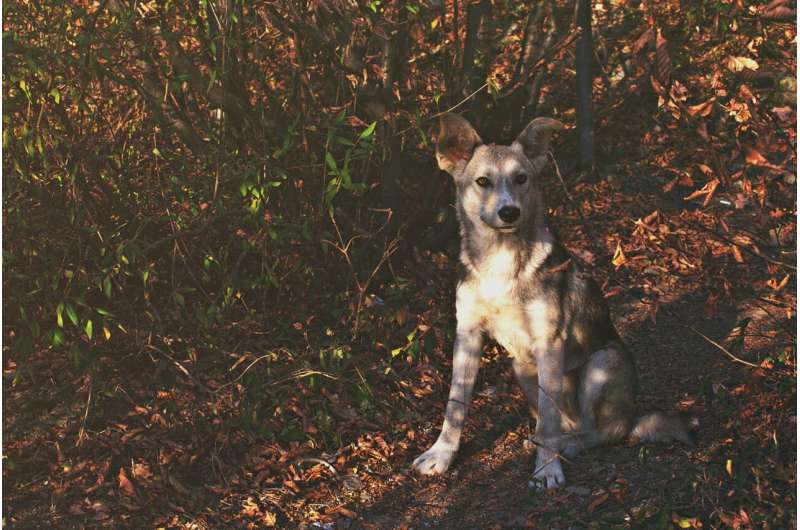This article has been reviewed according to Science X's editorial process and policies. Editors have highlighted the following attributes while ensuring the content's credibility:
fact-checked
peer-reviewed publication
trusted source
proofread
DNA analysis reveals that Jamestown Colony residents ate dogs with Indigenous ancestry

Dogs with Indigenous ancestry were eaten during a period of starvation at Jamestown, the first English settlement in North America in the 17th century, according to new research in American Antiquity.
This discovery changes historians' understanding of how Indigenous communities negotiated their relationship with rising colonial powers during this period. It also suggests that early European colonists depended on local Indigenous communities for their very survival, especially during the initial settlement period.
Researchers analyzed ancient mitochondrial DNA from archaeological dogs from Jamestown from the period AD 1609–1617. At least six of the Jamestown dogs that were analyzed had unambiguous evidence of Native American ancestry. These dogs shared mitogenomic similarities with Hopewellian, Mississippian, and Late Woodland period dogs from eastern North America.
The researchers also found that the six dogs were consumed by the residents at Jamestown. These results suggest complex forces at play before, during, and after the Starving Time, which influenced the presence of these dogs in the Fort and led the residents of Jamestown to consume dogs with Indigenous ancestry.
The genetic analyses of archaeological dogs also reveal insights into the social entanglement between colonizers and Indigenous communities. Dogs both connected and created tension between European and Indigenous cultures, reflecting the complicated and rapidly changing social landscapes that existed during this time.
The loss of Indigenous dogs is an underexplored aspect of colonial impacts in the Americas. The timing and rate of Indigenous dog replacement also have implications for understanding the ecological and cultural changes to Native American ways of life resulting from the influx of European dogs.
Lead researcher Ariane E. Thomas, a Ph.D. candidate at the University of Iowa, said, "The ancestry of the Jamestown dogs provides insight into European and Indigenous management of their dogs. Dogs with ancestry predominantly from Europe suggests that either British, Powhatan, or both groups kept their dogs from interacting with each other to maintain specific behaviors or observable phenotypes important to that group.
"However, a high proportion of Indigenous dog ancestry suggests a more complex engagement between the British and Powhatan peoples at Jamestown and less emphasis on maintaining the separation between dogs and their association with settlers. Identifying Indigenous dogs at Jamestown suggests this second, more complex dynamic is more representative of history."
More information: The Dogs of Tsenacomoco: Ancient DNA Reveals the Presence of Local Dogs at Jamestown Colony in the Early Seventeenth Century, American Antiquity (2024). DOI: 10.1017/aaq.2024.25
Journal information: American Antiquity
Provided by Cambridge University Press




















